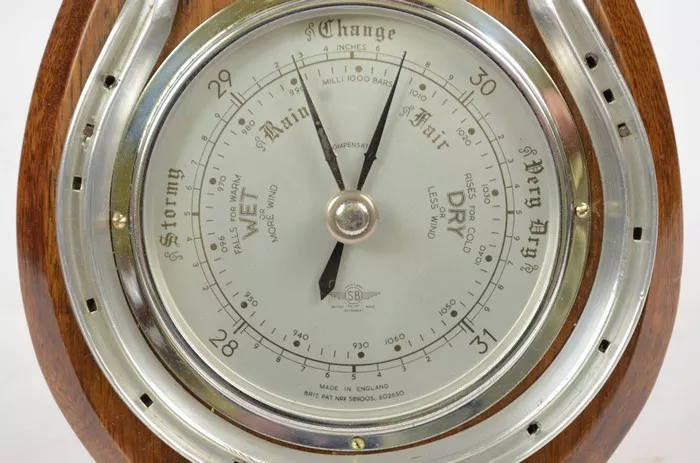The anemometer is a crucial instrument in meteorology and various engineering applications. It measures wind speed and, in some cases, direction. Since its invention, it has played a vital role in understanding atmospheric conditions, improving weather forecasting, and enhancing industrial processes. But when was the anemometer first used? This article explores its origins, development, and applications throughout history.
Early Development of the Anemometer
The concept of measuring wind speed dates back several centuries. Although wind itself has been observed and documented since ancient times, it wasn’t until the 15th century that the first practical anemometer was invented.
The First Anemometer: 1450s
The earliest known reference to an anemometer comes from Leon Battista Alberti, an Italian Renaissance polymath. Around 1450, he designed a simple device consisting of a mechanical plate that moved in response to wind pressure. This invention laid the groundwork for future anemometers by introducing the concept of wind measurement through mechanical movement.
Although Alberti’s design was rudimentary, it marked the beginning of systematic wind speed measurement. However, the device lacked precision and required significant improvements before becoming widely used.
Advancements in the 17th Century
In the 17th century, the development of scientific instruments accelerated, leading to more sophisticated anemometer designs. One of the most notable figures in this period was Robert Hooke, a British scientist and inventor. Hooke made significant contributions to the design of meteorological instruments, including the anemometer. His work helped refine wind measurement techniques, making them more accurate and practical for scientific observations.
The Cup Anemometer: 1846
The most widely recognized anemometer design, the cup anemometer, was invented by John Thomas Romney Robinson, an Irish astronomer, in 1846. His anemometer consisted of four hemispherical cups attached to horizontal arms, which rotated when exposed to wind. The speed of rotation was directly proportional to the wind speed, making it an effective and reliable tool for measuring wind velocity.
Robinson’s anemometer became a standard instrument in meteorology. Its simple yet effective design allowed for easy deployment in weather stations, improving data collection and weather forecasting.
The Hot-Wire Anemometer: Late 19th to Early 20th Century
As technology advanced, the need for more precise wind speed measurements led to the development of the hot-wire anemometer. This device, which emerged in the late 19th and early 20th centuries, used a thin wire heated by an electrical current. When air passed over the wire, it cooled down, altering the electrical resistance. By measuring these changes, scientists could determine wind speed with greater accuracy.
The hot-wire anemometer was particularly useful in fluid mechanics research and industrial applications where precise airflow measurement was necessary.
The Ultrasonic Anemometer: 20th Century
The 20th century saw further advancements in anemometer technology, leading to the development of ultrasonic anemometers. These devices use ultrasonic sound waves to measure wind speed and direction. By sending sound pulses between transducers and analyzing how the wind affects their travel time, ultrasonic anemometers provide highly accurate measurements without moving parts.
Ultrasonic anemometers are widely used in meteorology, aviation, and environmental research due to their durability and precision. They have significantly improved our ability to monitor and predict weather conditions.
The Laser Doppler Anemometer: Modern Era
One of the most advanced wind measurement devices today is the laser Doppler anemometer. This high-tech instrument utilizes laser beams to detect wind speed based on the Doppler shift of scattered light. It is commonly used in aerodynamics research, wind tunnel testing, and advanced meteorological studies.
Applications of Anemometers Throughout History
Anemometers have played an essential role in various fields, including:
- Meteorology: Anemometers have been crucial in weather forecasting since the 19th century, helping scientists predict storms, hurricanes, and other severe weather conditions.
- Aviation: Pilots and air traffic controllers rely on anemometers to assess wind conditions for safe takeoffs and landings.
- Engineering and Industry: Anemometers are used in wind tunnel testing, HVAC systems, and environmental monitoring to optimize airflow and energy efficiency.
- Renewable Energy: The wind energy sector depends on anemometers to assess wind speed for optimal placement of wind turbines.
Conclusion
The anemometer has evolved significantly since its invention by Alberti in the 15th century. From simple mechanical devices to sophisticated laser-based systems, anemometers have greatly improved our understanding of wind patterns and atmospheric dynamics. Their continued development ensures they remain an indispensable tool in meteorology, engineering, and environmental sciences.
Understanding the history and advancements of the anemometer highlights the importance of wind measurement in shaping modern science and technology.


